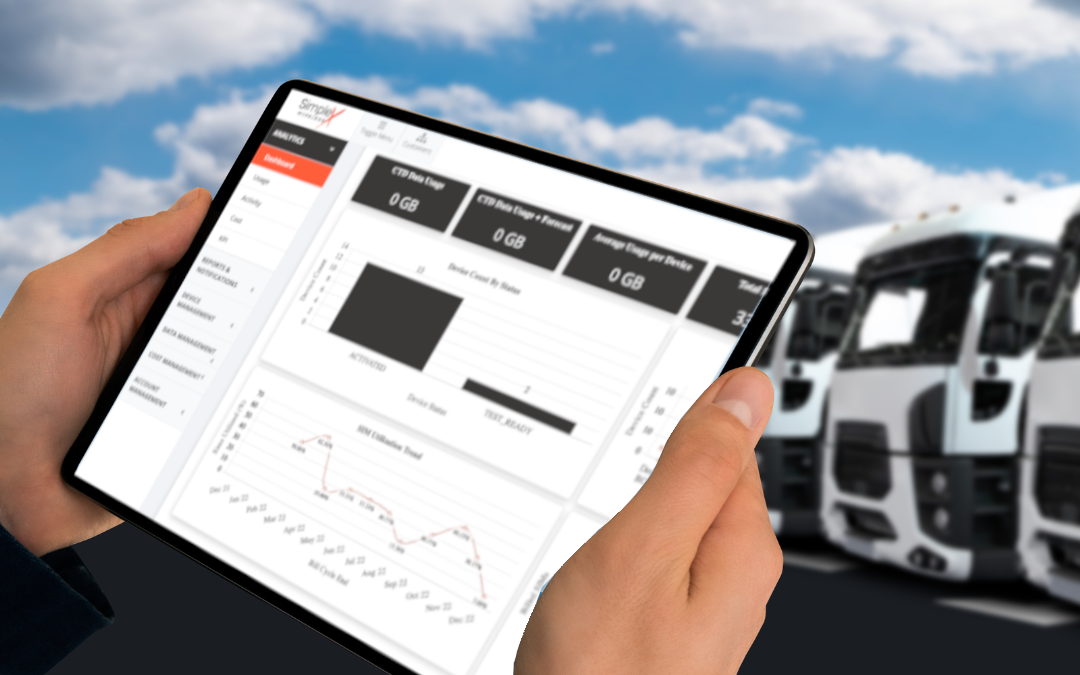
Press Release – Simplex Wireless and LoLo are taking IoT connectivity to the next level
November 15, 2022
CES 2023 was the first post COVID show when things felt like they were back to normal
January 11, 2023What types of Cellular Connectivity are there for GPS tracking?
When talking about cellular connectivity there are many types of cellular networks available. Commonly known to the public are the different generations of networks from 2G, 3G, 4G LTE all the way to 5G. However, there are some other networks that have been designed specifically for M2M or IoT devices such as CAT-M1 and Narrow Band IoT (NB-IoT) to name a few.
The M2M / IoT networks CAT-M and NB-IoT look to solve things such as cost and battery life which are key things for IoT devices. From cost perspective a cellular modem using CAT-M can in the less than $10 category while a LTE modem (depending on the class) could be as high as $50. This makes a significant difference in justifying the business case. In addition, CAT-M and NB-IoT networks are designed to make efficient use of your devices battery life. In the case of a GPS tracker type of application which is not plugged into a bigger power source.
The downside of using a CAT-M or NB-IoT is that there is not a ubiquitous worldwide coverage across the world like there is for 4G LTE, for example. Countries and continents have decided to take different paths on how to support CAT-M networks and even within a country there can be some coverage issues. If you have a device for the US market only for example you might be able to get away with it, but for a global footprint the coverage can be more sporadic.
Factors to Consider When Selecting a Cellular Connectivity Provider
When searching for the best cellular connectivity provider for your IoT connectivity it’s good to investigate a wide variety of things.
Technology stack, what type of dashboard or console does the provider offer. Does it have the necessary functions for you to be able to effectively monitor and manage your devices once they have been deployed to the field? You should look for the ability to set automatic rules to keep an eye on your fleet. Abnormal data usage patterns such as “a device is not using any data” or “a device is using excessive amount of data”. What type of device is my SIM card inserted into – monitor if an IoT SIM is being used on a Tablet or Mobile Phone. Geo location of the device – a device should be in a certain country or local.
Look into what type of backend / SDWAN (Software Defined WAN) offered by your Connectivity Service Provider (CSP). In a modern offering the data does not come out of the cellular network to the internet but goes through an SDWAN. The SDWAN provides a wide variety of functionalities that your enterprise might need. Data Throttling, IP-Geolocation, IP-Access lists or secure VPN connectivity to your datacenter. In addition to having these capabilities you should talk with the CSP on what they can actually do for you and at what cost.
On the commercial side when talking with large MNO organizations there are inherit costs built into operating and running these companies and through that they need to hit certain revenue levels. It is typical in the industry that there are required financial contractual obligations such as minimum annual spend that must be met to get a contract with the MNOs. Independent CSPs are able to run a leaner cost base and through that provide better commercial terms to grow alongside you.
Lastly, on the commercial aspect there is a lot of nickel and diming when acquiring agreements. Very often the first talking point is how much does data cost per Megabyte or per Gigabyte but the other hidden costs come later down the path when negotiating the contract. It’s wise to ensure that the provider offers full visibility into all costs at the start of the discussions not to waste time for anyone.
Summary
Cellular connectivity is an excellent choice if you need to track devices that are in areas with poor GPS reception. The devices can still get accurate information if they can connect to a cellular network. However, it is important to understand the pros and cons of cellular connectivity before you select a provider. You need to consider things like the network coverage, speed, fees and costs, and what devices can be connected to the network.
Jan Lattunen, CCO, Simplex Wireless

